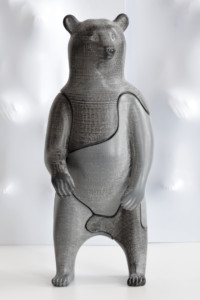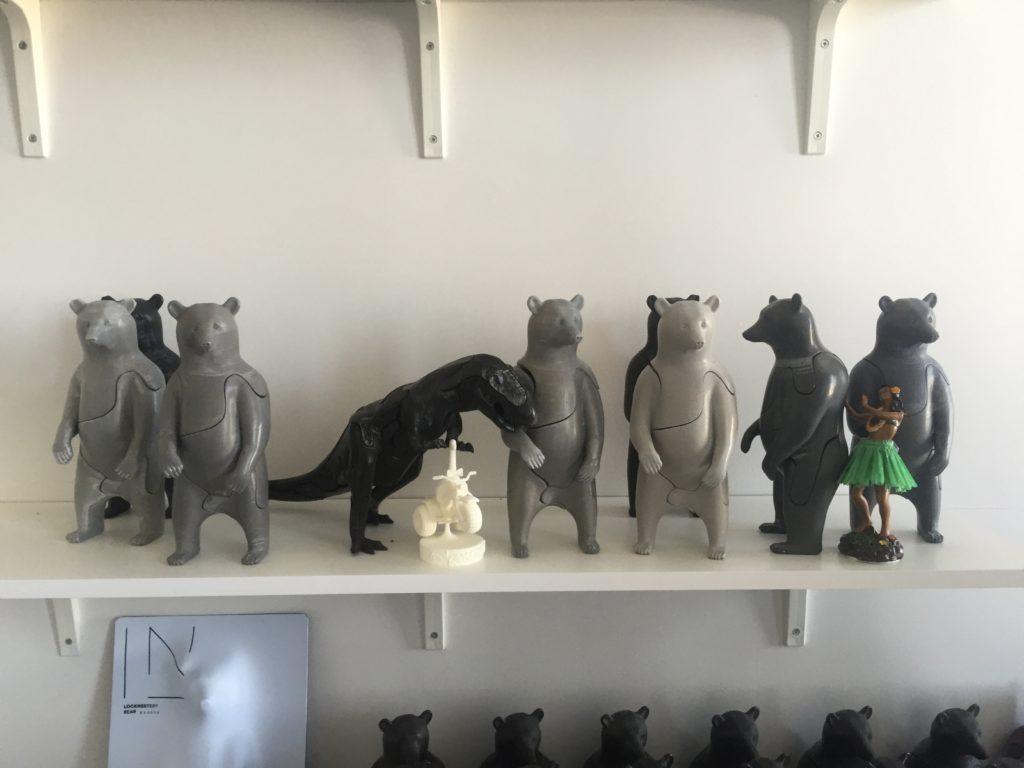There’s no denying that 3D printing technology has impacted a number of fields in a multitude of ways, particularly on the industrial level. But, when it comes to desktop 3D printing with thermoplastics, the current outcome rarely strays from the purpose of prototyping. The issues with trying to create consumer products on the desktop format include the rough surface finish and lackluster mechanical properties, making it a tough sell for people looking for a high-quality consumer product.
 But, one Brooklyn-based designer, named Fleet Hower, has put together an innovative process that grants his standard PLA prints with the quality look and feel of a true consumer product. The result of his process is LOCKNESTERS, a 3D puzzle comprised of complex geometries and a sleek surface finish. Last time we covered Hower and his LOCKNESTERS, which was back in 2014, the designer was offering six of his colorful 3D puzzles through 3D Hubs. However, after focusing on transforming his 3D printed puzzles into a high-quality designer toy, LOCKNESTERS now has a new look, new branding, and most importantly, a new feel.
But, one Brooklyn-based designer, named Fleet Hower, has put together an innovative process that grants his standard PLA prints with the quality look and feel of a true consumer product. The result of his process is LOCKNESTERS, a 3D puzzle comprised of complex geometries and a sleek surface finish. Last time we covered Hower and his LOCKNESTERS, which was back in 2014, the designer was offering six of his colorful 3D puzzles through 3D Hubs. However, after focusing on transforming his 3D printed puzzles into a high-quality designer toy, LOCKNESTERS now has a new look, new branding, and most importantly, a new feel.
I recently visited Hower’s studio to check out his 3D puzzles and their production process. Suffice to say, I was extremely impressed by the smooth finish, and was quite baffled to discover that these pieces were all printed on a desktop 3D printer with PLA material. Instead of redesigning all six of his previously developed 3D puzzles, Hower is now focusing on optimizing one of them at a time, starting with his 5-piece Bear. As for 3D printers, the designer is still utilizing the first-ever MakerBot Replicator 2 that he purchased back in 2013, and now has a handful of them printing out puzzle pieces simultaneously.
Although the 3D printer plays an integral role in the production of LOCKNESTERS, Hower has revamped his process with a number of unique finishing techniques. Now, 3D printing technology is just the initial step of a more comprehensive technique. After the 3D printed puzzle pieces are printed, the supports are then sanded down, tumbled in a water-ceramic mixture, and then tumbled once again within a cask of walnut shells. The outcome of this intensive post-processing method is an extremely smooth, uniquely patterned PLA puzzle pieces. Still, Hower admits that 3D printing technology was monumental for the initial development of his designer toys.
“It was super instrumental on the prototyping end of things, in a way that made it super accessible price wise. The way I came to these 3D puzzles was to create something that otherwise wouldn’t exist, printers can make things more efficient, cheaper and faster, but I was trying to focus on what I could make with a printer that I couldn’t make otherwise,” Hower told me. “It was huge for that part, and it’s still a huge part of the process but there are other tools that are figuring into it. But, at that beginning stage, I started with just material and a 3D printer in my kitchen.”
 Originally, Hower was primarily focused on making his 3D puzzles colorful and fun, but soon decided to focus on making them look and feel like a true consumer product. Now, the 5-piece Bear puzzle has a sleek and modern look, made up of various grays and black, making it both the perfect display for your own work desk and a great puzzle for your child’s toy chest. With this comprehensive post-processing method, Hower has completely rebranded LOCKNESTERS, and is now looking at his product as a design object rather than a just a toy. Even the very packaging of the LOCKNESTERS has been reinvented, utilizing vacuum forming to give his Bear puzzle the look of a true collector’s item.
Originally, Hower was primarily focused on making his 3D puzzles colorful and fun, but soon decided to focus on making them look and feel like a true consumer product. Now, the 5-piece Bear puzzle has a sleek and modern look, made up of various grays and black, making it both the perfect display for your own work desk and a great puzzle for your child’s toy chest. With this comprehensive post-processing method, Hower has completely rebranded LOCKNESTERS, and is now looking at his product as a design object rather than a just a toy. Even the very packaging of the LOCKNESTERS has been reinvented, utilizing vacuum forming to give his Bear puzzle the look of a true collector’s item.
“For now, I’m going to focus on the finish, focus on the packaging, make it really simple, a nice design object and push all of those things, and not worry too much about color right now,” Hower said. “Color is something I can see bringing back at some point, at least white or other grays. But, as you can see, the website and brand is very monochrome, kind of sleek and design oriented. It was really the logistics, when I was getting these orders with all different colors and I was trying to build an inventory and it was impossible. Also, I think the black works with the brand, and also works with that discoloration effect too.”
All in all, Hower is taking integral steps to getting his 3D printed puzzles into the hands of designers, kids, and 3D printing enthusiasts around the world. Although he’s currently only selling the 5-piece Bear puzzle, which currently costs $80, he plans on recreating both the 21-piece T-Rex and 27-piece Dog puzzles in the near future. What really makes Hower’s 3D printed designer toys unique isn’t just the use of desktop 3D printing, but also the marrying of traditional and emerging manufacturing techniques. Once the 3D printed parts undergo the sanding and tumbling process implemented by Hower, they suddenly take on the appearance of a consumer-friendly and aesthetically pleasing product. Thoughts on this project? Let’s discuss further over in the 3D Printed Puzzles forum at 3DPB.com.
Subscribe to Our Email Newsletter
Stay up-to-date on all the latest news from the 3D printing industry and receive information and offers from third party vendors.
Print Services
Upload your 3D Models and get them printed quickly and efficiently.
You May Also Like
3D Printing News Briefs, June 11, 2025: Sustainability, Automotive Tooling, & More
We’re starting with sustainability news in today’s 3D Printing News Briefs, as EOS has strengthened its commitment on climate responsibility, and Zestep is making 3D printing filament out of eyewear...
3D Printing 50 Polymer Stand-In Parts for Tokamaks at the PPPL & Elytt Energy
Of all the world’s things, a tokamak is one of the hardest, most complex, expensive and exacting ones to make. These fusion energy devices make plasma, and use magnets to...
3D Printing News Briefs, May 17, 2025: Color-Changing Materials, Humanoid Robot, & More
We’re covering research innovations in today’s 3D Printing News Briefs! First, Penn Engineering developed 3D printed materials that change color under stress, and UC Berkeley researchers created an open source,...
Firehawk Aerospace Partners with JuggerBot 3D, Gets $1.25M from AFWERX for 3D Printed Propellants
Texas-based Firehawk Aerospace, an advanced energetic materials firm that works with aerospace and defense applications, announced a strategic partnership with JuggerBot 3D, an Ohio-based large-format 3D printer manufacturer. Together, the...


































